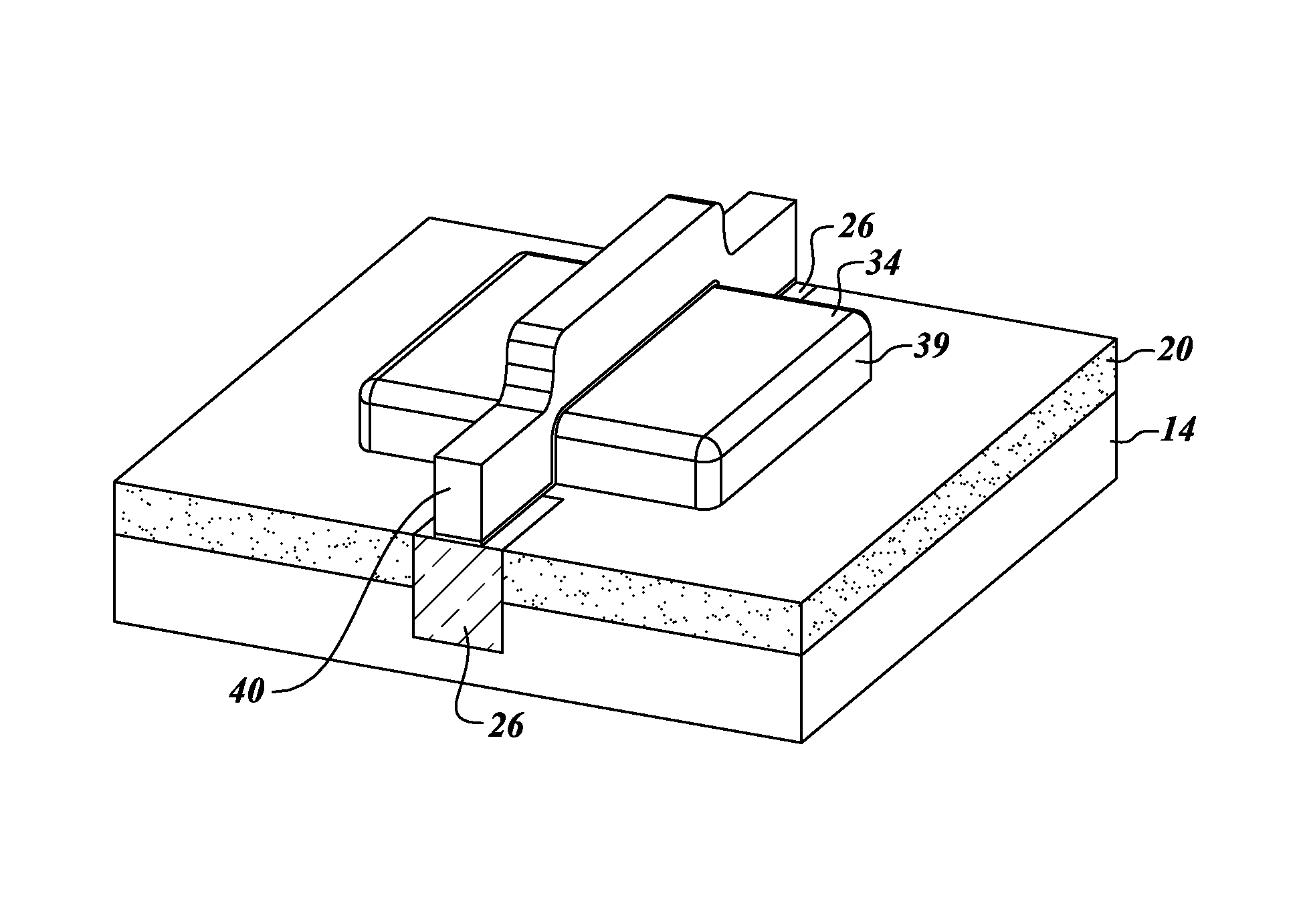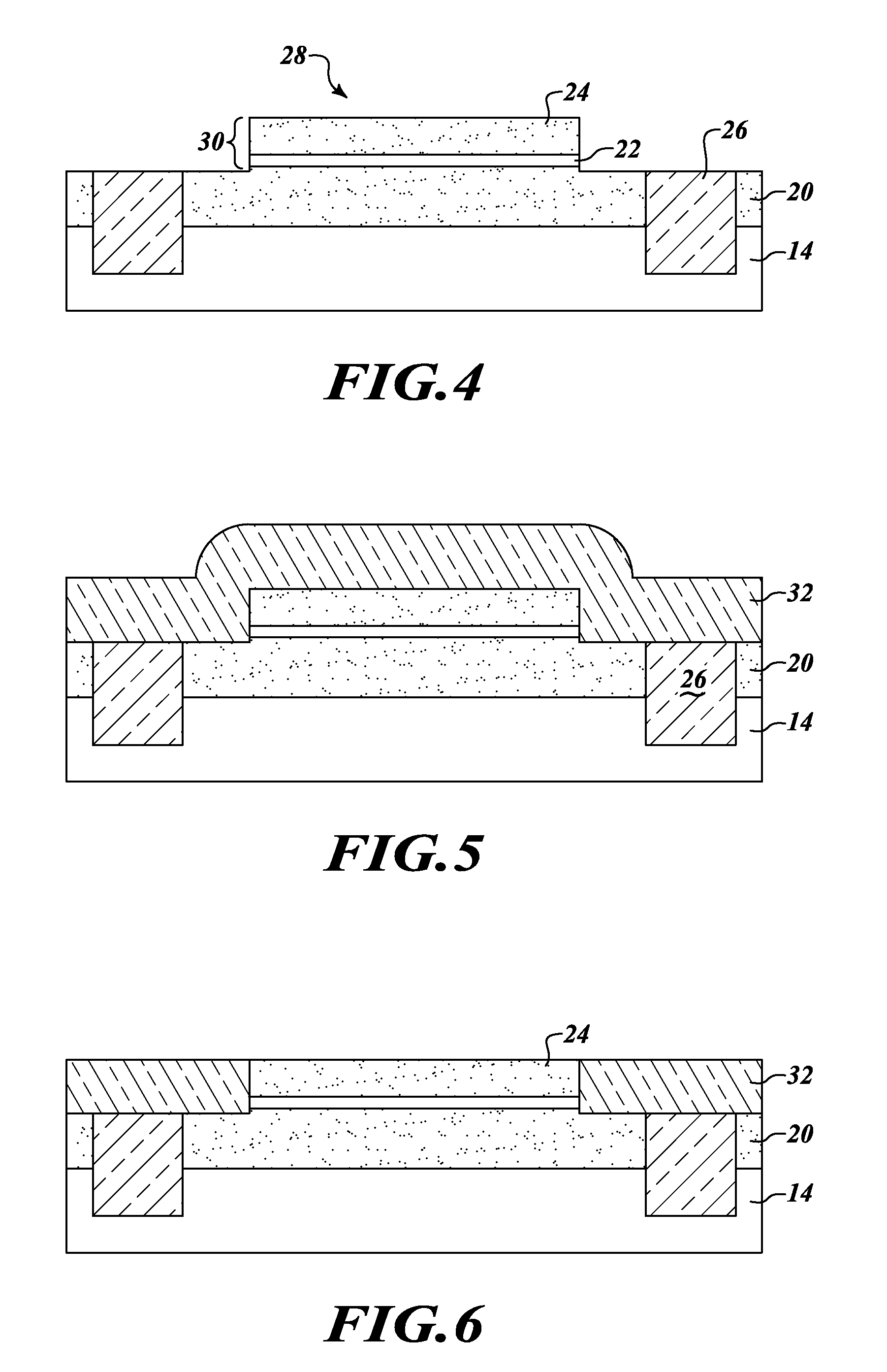Structure and method for making a strained silicon transistor
a technology of strained silicon and strained channels, which is applied in the direction of semiconductor devices, basic electric elements, electrical appliances, etc., can solve the problems of significant challenges, relaxed crystalline silicon is said to be lattice-mismatched with respect to relaxed crystalline sige, etc., to prevent latching, block other parasitic effects, and eliminate leakage occurrence
- Summary
- Abstract
- Description
- Claims
- Application Information
AI Technical Summary
Benefits of technology
Problems solved by technology
Method used
Image
Examples
Embodiment Construction
[0021]As shown in FIG. 2, a graded SiGe layer 20 is grown by an epitaxial process on top of a silicon substrate 14. The SiGe layer 20 is graded having a higher percentage of silicon adjacent the single crystalline substrate 14 and gradually reducing the percentage of silicon as it grows away from the substrate 14. A single crystal silicon layer 22 is formed overlying the graded SiGe layer 20.
[0022]The amount of lattice mismatch, and thus the amount of tension on the silicon layer 22, depends on the relative percentages of Si to Ge in the SiGe layer 20. When SiGe is formed, the percentage of each of the two elements can vary based on the formula of Si1-xGex in which x is the percentage of each of the two elements. A higher percentage of x for Si results in a lower mismatch and less stress at the junction of the silicon layer 22 and the SiGe layer 20.
[0023]Conversely, a lower percentage of Si and a higher percentage of Ge results in a greater mismatch and a higher stress. The amount o...
PUM
 Login to View More
Login to View More Abstract
Description
Claims
Application Information
 Login to View More
Login to View More - R&D
- Intellectual Property
- Life Sciences
- Materials
- Tech Scout
- Unparalleled Data Quality
- Higher Quality Content
- 60% Fewer Hallucinations
Browse by: Latest US Patents, China's latest patents, Technical Efficacy Thesaurus, Application Domain, Technology Topic, Popular Technical Reports.
© 2025 PatSnap. All rights reserved.Legal|Privacy policy|Modern Slavery Act Transparency Statement|Sitemap|About US| Contact US: help@patsnap.com



